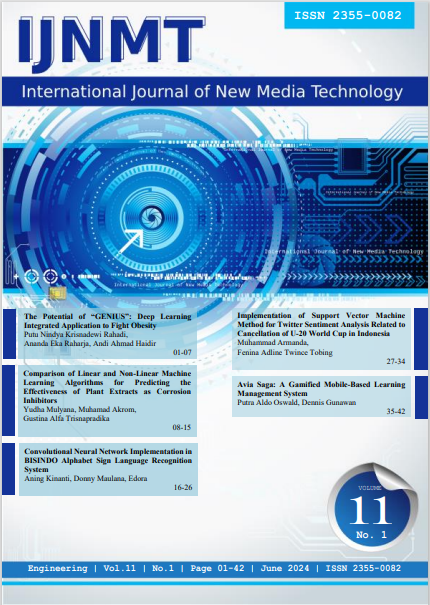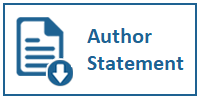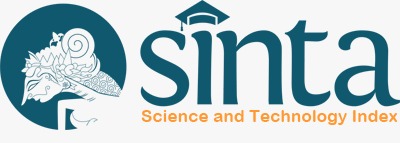Convolutional Neural Network Implementation in BISINDO Alphabet Sign Language Recognition System
DOI:
https://doi.org/10.31937/ijnmt.v11i1.3629Abstract
This research develops a system for recognizing finger spelling gestures in Indonesian Sign Language (BISINDO) using Convolutional Neural Network (CNN). The objective of this research is to apply the Convolutional Neural Network (CNN) method to the BISINDO finger spelling gesture recognition system to improve its accuracy. The method employed is Convolutional Neural Network (CNN), an effective method for processing image data for pattern recognition. Based on the test results, the system demonstrates that the developed CNN model is capable of recognizing BISINDO finger spelling gestures with an accuracy of 97.5%. This indicates that the BISINDO finger spelling gesture recognition system performs well in pattern recognition. The implementation of the system for real-time prediction via a web interface using Flask also enhances its accessibility. However, there is still room for improvement, particularly in recognizing one of the 26 letters that has not been predicted accurately. For further development, it is recommended to consider collecting a larger dataset and incorporating more complex gesture variations to improve recognition accuracy.
Downloads
Additional Files
Published
How to Cite
Issue
Section
License
Authors retain copyright and grant the journal right of first publication with the work simultaneously licensed under a Creative Commons Attribution-ShareAlike International License (CC-BY-SA 4.0) that allows others to share the work with an acknowledgement of the work's authorship and initial publication in this journal.
Authors are able to enter into separate, additional contractual arrangements for the non-exclusive distribution of the journal's published version of the work (e.g., post it to an institutional repository or publish it in a book), with an acknowledgement of its initial publication in this journal.
Copyright without Restrictions
The journal allows the author(s) to hold the copyright without restrictions and will retain publishing rights without restrictions.
The submitted papers are assumed to contain no proprietary material unprotected by patent or patent application; responsibility for technical content and for protection of proprietary material rests solely with the author(s) and their organizations and is not the responsibility of the IJNMT or its Editorial Staff. The main (first/corresponding) author is responsible for ensuring that the article has been seen and approved by all the other authors. It is the responsibility of the author to obtain all necessary copyright release permissions for the use of any copyrighted materials in the manuscript prior to the submission.















